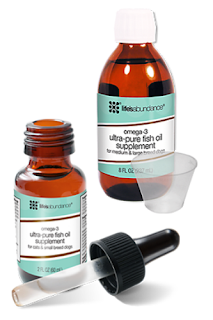Life's Abundance Pet Product Formulator, Dr Jane Bicks shares her thanks -
(and WE THANK HER!!)
Blog Entry 12-13-2018
Honestly, I was just getting used to it being 2018. Where does the time go?
For me, the holidays are a time of joy and reflection. A time to celebrate our family and friends. To fondly remember those we’ve lost. To find inspiration and hope. To share with those who are less fortunate than ourselves. To do something meaningful and unexpected for someone in need or having an especially hard time. To my mind, there is so much to be grateful for and so much to cradle in our hearts.
Perhaps more than anything, I'm truly thankful to be part of a company that is so focused on helping others improve their quality of life. A company that works to make life better for both people and their companion animals.
I consider it a great privilege to work with such a dedicated team. And to communicate with you through this blog, where we try to share valuable information to help people be informed and entertained. And, of course, to bring you updates about the vitally important work of The Dr. Jane Foundation.
Our charitable foundation has achieved great things this past year! In addition to 18 financial awards given to worthy animal rescues through our usual grant process, we were also able to provide emergency funding to two groups that coordinated assistance to injured and homeless animals displaced by devastating fires that raged in California last month. As many of you know, the Camp Fire was the deadliest wildfire in California's history. The emergency response of the last two groups on the following list of grant recipients made a tremendous difference for all kinds of animals, and for that, we are extremely grateful. Without further ado, here's the list of amazing rescue organizations that received funding from our non-profit this year.
Paw Warriors, Inc. of Spring Hill, FL
BARC Humane Society of Quitman, GA
People & Pets Together of Minneapolis, MN
Paws for Life of Youngsville, NC
Rescues Unlimited of Gregory, SD
ACTion Programs for Animals of Las Cruces, NM
Animal Rescue of Southern Colorado of Antonito, CO
Bounce Animal Rescue of Fort Collins, CO
Boxer Aid and Rescue Coalition, Inc. of Tallahassee, FL
Eastern Plains Animal Welfare Alliance of Burlington, CO
MeeowzResQ of Orange, CA
My Second Home Rescue of Carr, CO
New England Society for Abandoned Animals of Barnstable, MA
Res-Que, Ltd of Reno, NV
The Animal Interest League & Sanctuary (dba TAILS) of Delta, CO
Rehoboth Animal Advocates of Rehoboth, MA
Herd U Needed A Home Rescue of Bend, OR
Greyhounds in Motion of Winter Park, FL
Humane Society of Ventura County of Ojai, CA
North Valley Animal Disaster Group of Chico, CA
The generosity and patronage of our customers enables our foundation to continue its good works. From the bottom of my heart, I thank each and every one of you. Every time you shop at Life's Abundance, a contribution is made to our funding. And we are very proud that over 95% of that money goes directly to the organizations that need the most help.
While the work of the foundation is a vital part of Life's Abundance, our central commitment is devotion to the people who use our products: you inspire us. Without your support and feedback we would not be the company we are today, and from the very core of my being, I thank you. Rest assured, we will continue to improve our innovative health formulations and create new, cutting-edge products to help improve the health and longevity of companion animals. With the combined efforts of our committed and motivated team, we can surely make 2019 our most successful year ever!
Thank you for the privilege of working with you and your families, for the trust you place in our products, and for all you do to make the world a better place for companion animals.
From all of us here at Life’s Abundance, we wish you and yours a Meowy Christmas and Happy Paw-nukkah!
 |
| Dr. Jane Bicks, DVM |
I work with a GREAT Company - Dr Jane Foundation is just one of the many, many reasons!
Lori























